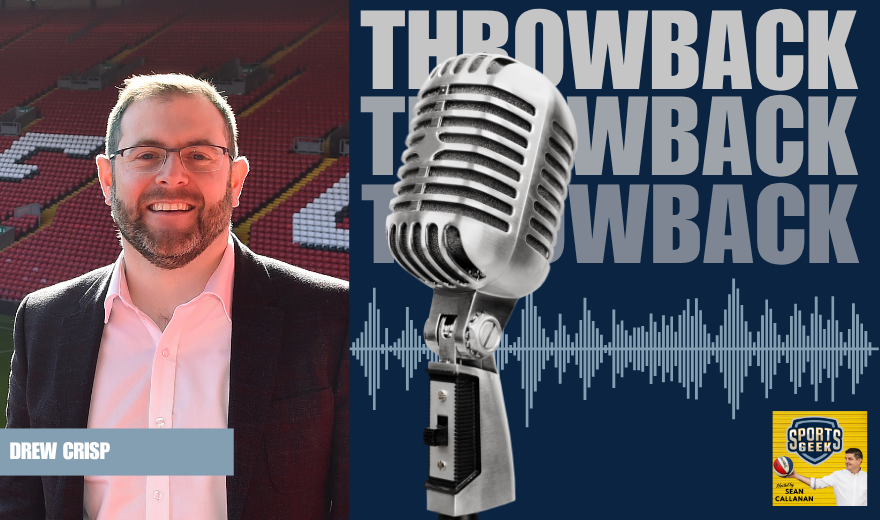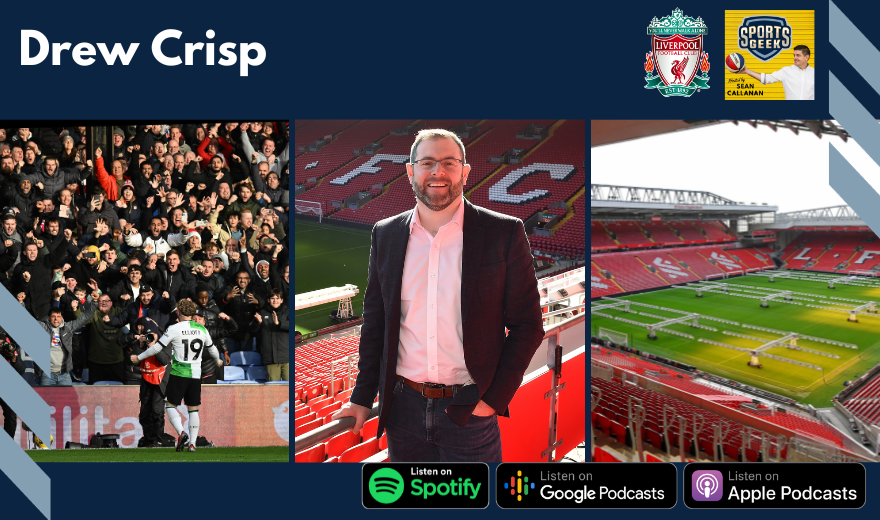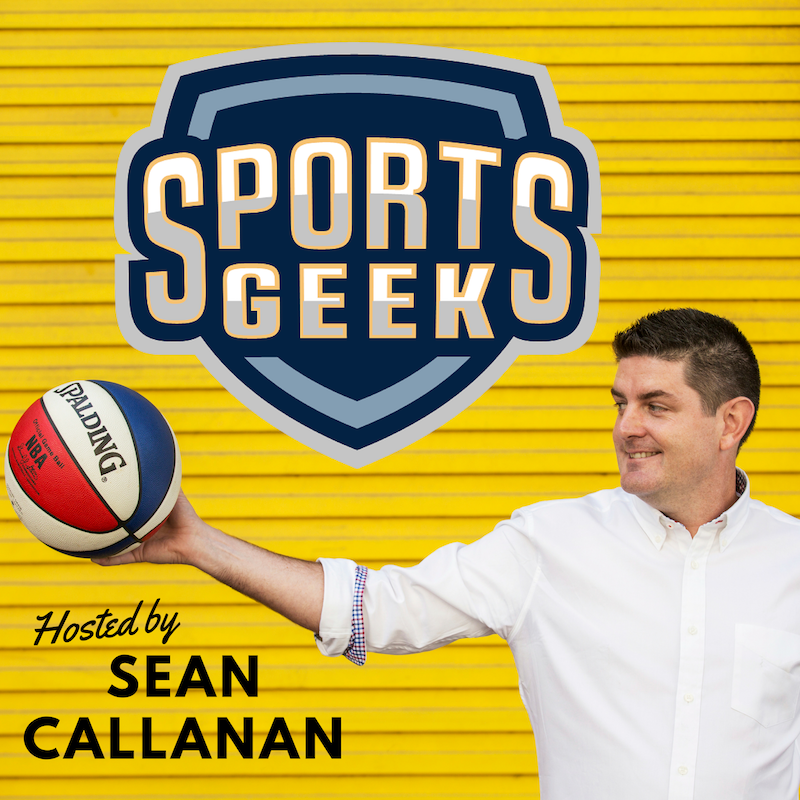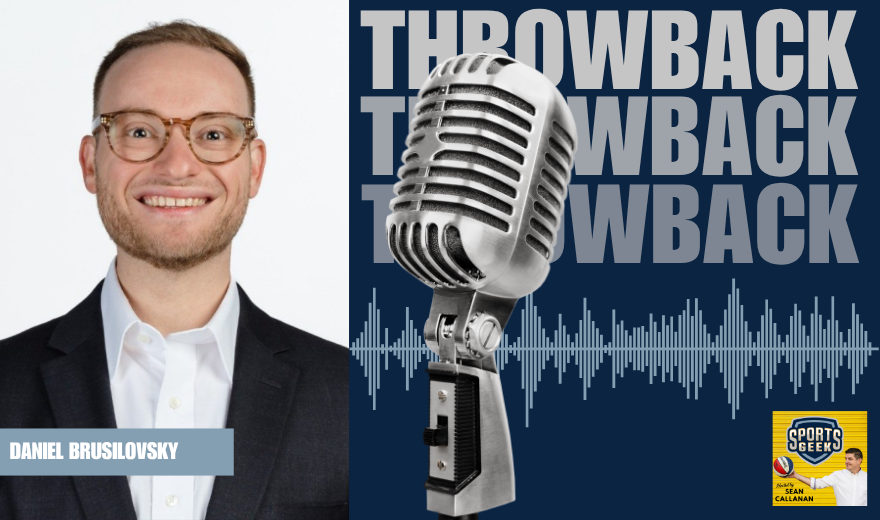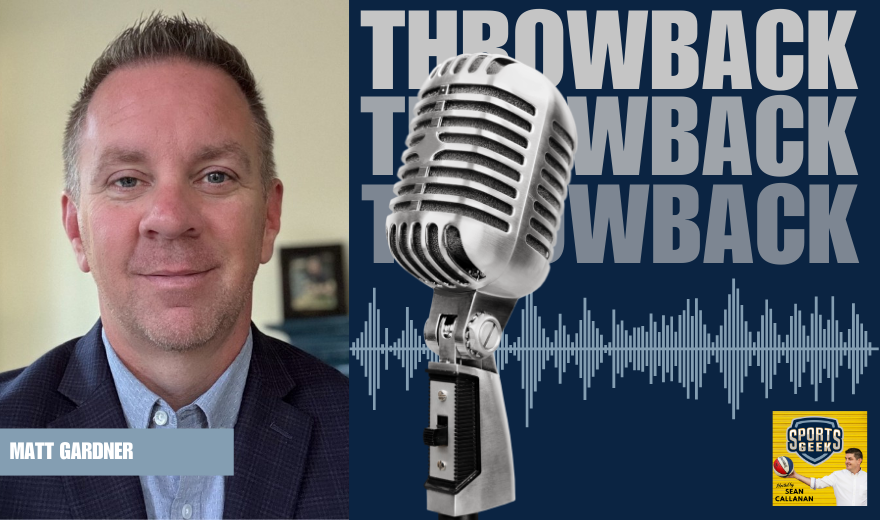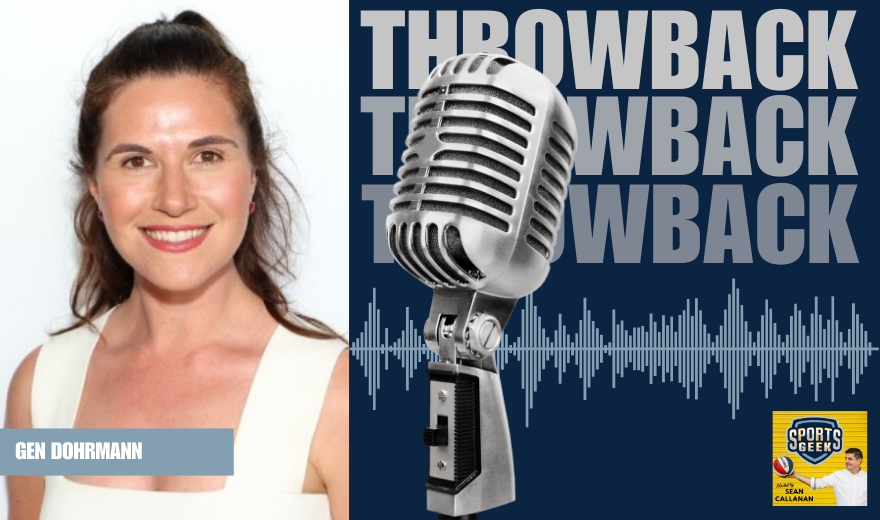In this Sports Geek Throwback episode, Sean Callanan interviews Drew Crisp from episode 360
Can't see podcast player? Click here to listen
Key Takeaways
In this Sports Geek Throwback, Drew and Sean discusses:
- Integration between media, marketing, and product teams is crucial for achieving strategic goals in sports organisations
- Top-of-funnel content and middle-funnel engagement are primary focus areas for sustainable growth
- Commercial partnerships benefit from aligned digital capabilities and audience reach
- Fan-first approach drives authentic connections and meaningful experiences
- Cross-functional collaboration enhances operational efficiency and product development
Sean: And so your role SVP of digital, digital is different for different parts of the world and different definitions. What's the definition of your role? What's the remit? What are the things that you look after?
Drew: Yeah, digital is an all encompassing thing now, isn't it? And, and it does mean very different things to very different people.
So in, in my world, it, I mean, it's pretty straightforward in that there are three parts to our digital business, there is our media business.
So that is everything that we do in terms of content, the content that we put across our own. OTT the content that gets picked up on our linear TV feed from international distributors and also sits on the sky and Virgin here in the UK.
And the media team also look after all of our social channels. So that's the 1512 or 1512, actually, maybe different social platforms that we exist on and, and the hundreds of millions of followers that we have the second pillar is our marketing pillar.
So that sits within digital kind of does what it says on the tin. But it also is our, you know, kind of insight, intelligence and marketing operations function.
And then the third part is what we call product and proposition. So that's all of our fan facing products. So it looks after memberships plus all of our website, plus all our apps, it supports our ecom platform capability.
And then, you know, a couple of years ago through, we decided to fold the rest of kind of the it business into that. So all of the infrastructure and tech operation. So all of that is what we encompassed as digital.
Sean: Well, that is a wide remit. Was it was it, did it look like that when you came in or did you go through a bit of a digital transformation process to get to that place?
Drew: Yeah. No, organizationally, we went through a bit of a, a bit of a transformation. So when I joined, I had the media part, I had the marketing part though, it's changed slightly in the last few years. And the sort of digital transformation program because we had a, you know, a program of work just like many other organizations do. And so as that evolved and as we kind of grew and developed what we have and where we've kind of come from over the last four years, that's, that's why? Yeah, that's how it's evolved into, into where it is today.
Sean: I mean, I have spoken to a lot of teams that have, you know, that data analytics marketing function and that content pillar, sort of media pillar very separate and can sometimes, you know, be competing but not really working hand in hand. Is it really important for you to have sort of again, have those teams both reporting into you but cross functionally supporting one another.
Drew: Massively I think one of the biggest, I, I mean, I actually think one of the biggest changes that we've seen is probably more from a a people an operational thing as well as kind of some of the tech stack that we've been doing. And so having having a marketing function that is absolutely intertwined with what we do from a media content reach perspective and supporting all of our product development is critical. So, and I, and I think having them all aligned to a kind of common, this is where we're headed, this is how we're going to kind of grow our fan base, both top of the funnel, social area as well as kind of middle bottom of the funnel from a engagement conversion perspective. You can't do that particularly in the sports industry unless those three are absolutely, you know, in sync. One feels the other. And, and I think that's a, it's a really big kind of change from an operational process people, you know, values strategy and then you was talk talking about their, you know, effectively a, a funnel.
Sean: Liverpool is a, is a global beast with, you know, many platforms, millions of millions of fans. You know, where, where do you put your focus like from a, from a marketing effort from a marketing effort and then funneling that to, to the content that you're producing.
Drew: Yeah, I think that's the challenge with all big sports entities. You know, you can try and be all things to all people. But when you've got a global fan base, the size and scale that we have, you know, it's, it's almost impossible. And at the same time as wanting to do the right things by the fans, we've got all of our commercial partners to consider as well. And one of the reasons that they're our commercial partners is because because of the scale of our audience reach and, and all of our digital capability, I, I've been really clear, I think, probably easy for me to say, I, I guess the team would verify that, but I think I've been reasonably clear in that the two important aspects of that funnel, so to speak are the fan base overall at the top of the funnel because without them, you know, we don't exist at the global scale that we do. So, number one is kind of how we're making sure we're giving content and experiences to the fans that we want to give. And I think the second part that's important is then what I call that middle of the funnel kind of engagement piece. So getting fans to actually engage in our products and our platforms because that's where we really start to create that kind of 1 to 1 connection with them and really understand them. Those two things are the priority, right? Ultimately, if it results in some sort of transaction, that's obviously brilliant. But, but we've got to get those first two parts, right? And, and actually, that's how we thank fans frankly for being fans, because they are hugely hugely important to us.
Listen To Sports Geek
Recent Sports Geek Reads
- AI Layoffs, OpenAI’s For-Profit Transition & NASCAR battle
- Saudi Skyscraper Stadium fake, Messi MLS & Liverpool’s AI plan
- Dodgers Hit $1B in Revenue as Nike Revolutionizes Footwear & UFC Expands with Paramount+
- Apple’s $750M F1 Deal & MLB’s Shifting Viewership: Changing Media Rights Landscape
- NFL-Disney Deal & ESPN-YouTube TV Negotiations: Sports Media’s Streaming Future
- NFL Moves Pro Bowl , Kelce into Six Flags & YouTube Likeness Detection


